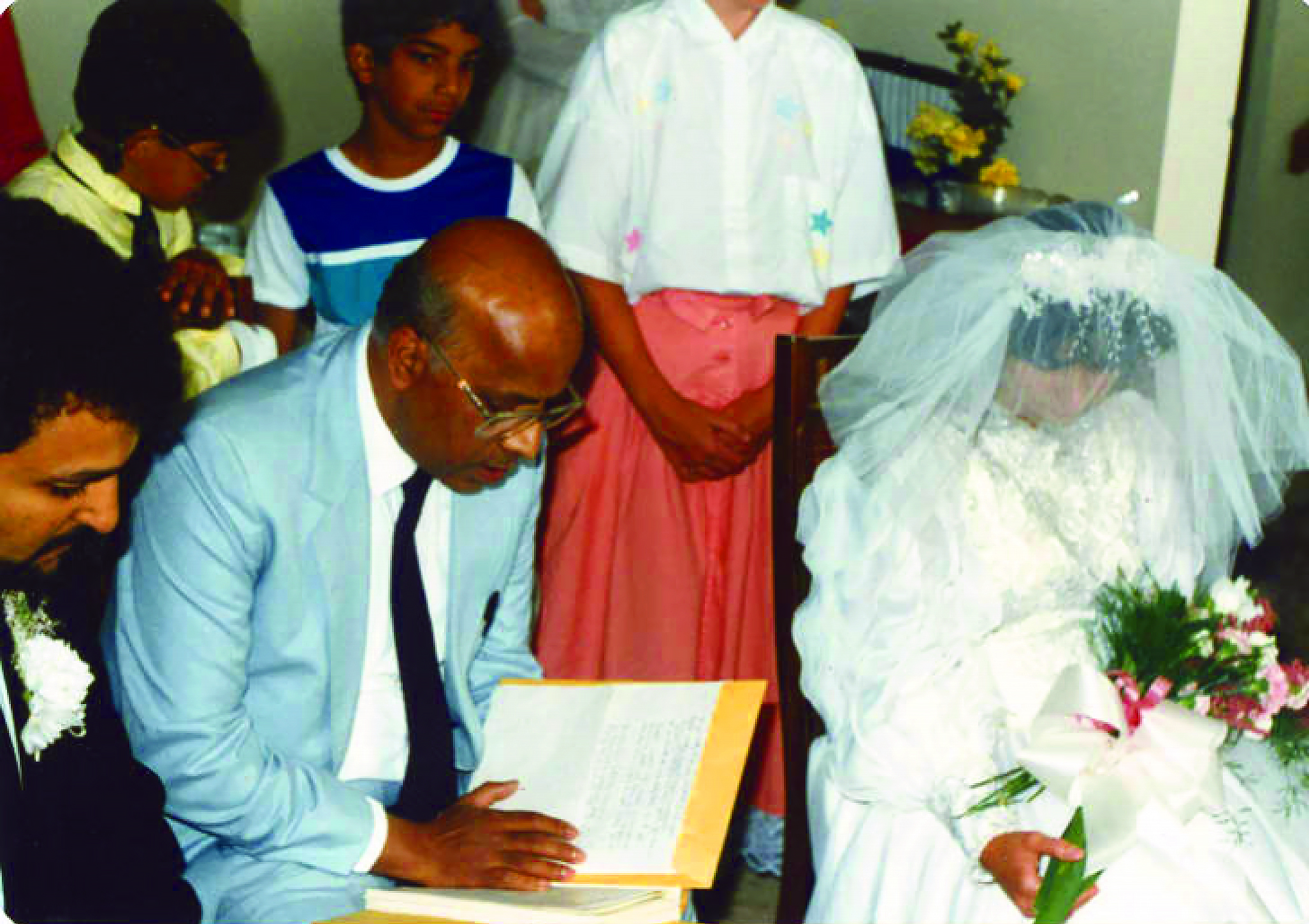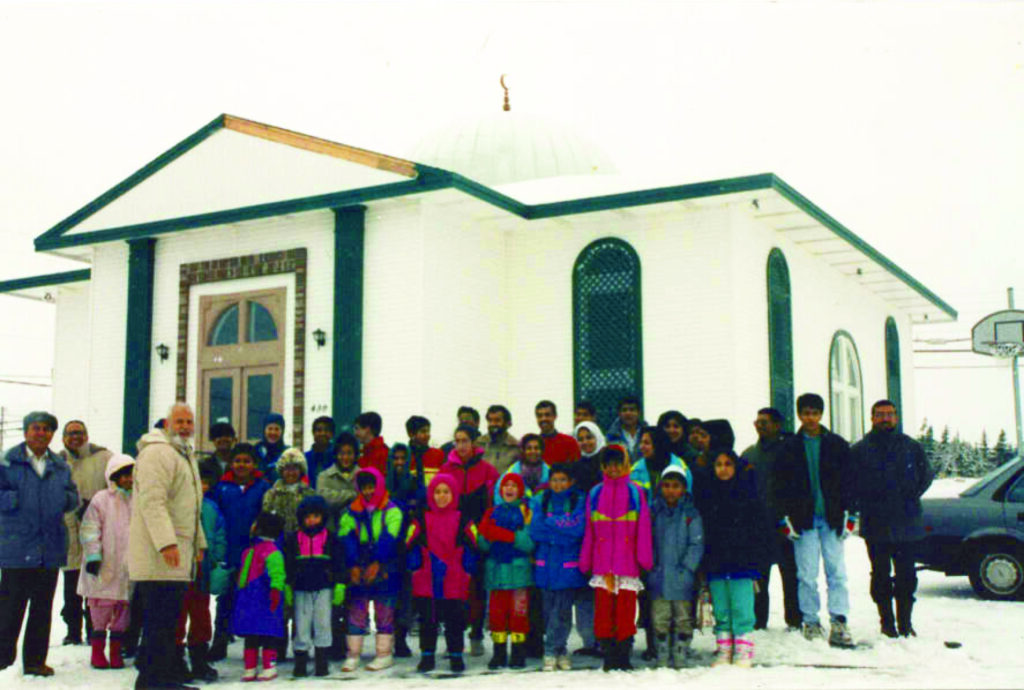The Growing Canadian Muslims Population
By Ayse Sule Akinturk
Sep/Oct 2024

Canadian Muslims are often perceived as racialized newcomers who escape oppression and/or poverty elsewhere. However, this perception is highly problematic because it fails to acknowledge the responsibility of non-Muslim forces in many cases of forced migration and overlooks Canadian Muslims’ long histories, diverse experiences and great contributions. This perception continues to persist even though the contributions of Muslims to Canada and world civilization began to be highlighted across the country in 2007 when October was proclaimed as Canadian Islamic History Month.
The first officially recorded Muslims in Canada were James and Agnes Love, a young Scottish couple who migrated to Ontario in 1851. During his archival research, Daood Hassan Hamdani (d. 2019), a well-known economist and statistician, found that the family’s members were recorded as “Mohammadens” in Canada’s first census (1871). For the next few decades, more Muslims came mostly from Ottoman-ruled Syria, Lebanon, Albania and Yugoslavia. Since then, their number has been growing slowly but steadily.
According to 2021 census data, Islam continues to be the most reported non-Christian religion in Canada: nearly 1.8 million (1 in 20). The same data shows that Muslims increased from 3.2% (2011) to 4.9% (2021) — the highest growth rate among all religious minorities (Statistics Canada: “Focus on Geography Series, 2021 Census of Population” 2021).
Interestingly, “Statistics Canada” observed a similar trend in the province of Newfoundland and Labrador, where religious diversity is the lowest — 82.4% of the population self-identifies as Christian. It also reported that the share of Muslims in the provincial population increased from 0.2% (2011) to 0.8% (2021). The Muslim Association of Newfoundland and Labrador (MANAL) estimates it to be over 7,000 as of 2024.
This most Eastern province has a well-deserved reputation for being welcoming and friendly, especially toward those much-needed international professionals who come to teach and work in health, water resources, oil, naval engineering and other key sectors. Historically, this acceptance has encouraged the influx of many Muslim professionals and graduate students with their families. While these early Muslims didn’t experience or report any major incident of hatred, the recent rise of Islamophobia elsewhere in Canada has led to a sense of increased vulnerability.
The 2017 killing of six worshippers in the Quebec Islamic Cultural Centre, the subsequent rise of hate crimes nationwide and, finally, some local incidents of hate speech against immigrants and Muslims have encouraged various university and community collaborations to identify and address the rise of Islamophobia in this province. Such collaborations identified an important gap: Despite their long history and great contributions, Muslims were not systematically represented in the province’s heritage and archives.
Islamic History Month
Taking the first steps to fill this gap, MANAL advocated for and successfully secured the proclamation of October as Islamic History Month by the City of St. John’s and the Government of Newfoundland and Labrador in 2019 and 2022, respectively. During this period, they partnered with the Memorial University of Newfoundland and Labrador for an archival research project to document the history of the Muslims in the province. Co-led by Dr. Jennifer Selby (professor, religious studies) and Ayse Sule Akinturk (post-doctoral fellow, Department of Religious Studies), the Muslim Narratives and Lives in Newfoundland and Labrador (MNL in NL) community partnership project was launched in 2020 with the support of the Social Sciences and Humanities Research Council’s (SSHRC) Partnership Engage Program.
The MNL in NL project initially focused on scanning existing archival materials to uncover any Muslim presence since 1925 — the year when Memorial University was established. It also produced new records by collecting the narratives of self-identifying Muslims and their personal archival donations, as well as conducting oral history interviews with 22 individuals who had long-lived experiences in the province. Some of the findings will be shared through a book that, we hope, will be launched in 2025.
In the meantime, a physical and digital archival space is being created at Memorial University’s QEII Library to secure a permanently growing archive to document the past, present and future histories and contributions of this province’s Muslims.
Before the project’s launch, the late Muhammad Irfan (d.2008) and his wife Razia were assumed to be the province’s first Muslims. According to Memorial University records, Irfan joined the Department of Physics as a faculty member in 1964 and for many years was chairman of its radiation control committee. In addition, he also conducted several Muslim wedding ceremonies. In 1999, seven years after his retirement, he and his family relocated to Ontario.
The MNL in NL Project revealed a longer than previously assumed history of Muslim faculty at Memorial University. One of the earlier faculty members thus identified was the late Shafiq Alvi (d.2016), who joined its Department of Economics in 1961 to teach public finance. In 1963 he accepted the position of head of Loyola College’s (the future Concordia University) Department of Economics and moved to Montreal. He also volunteered with the nonprofit organization Muslim Community of Quebec as its secretary and treasurer.
Another interesting finding relates to late Hamdani — he was one of Memorial University’s earliest Muslim graduate students. While living in St. John’s (1964-66) to earn a master’s degree in economics, this active and vocal student held leadership roles on campus and wrote articles for the university magazines and local newspapers. After graduating, he worked in Ontario as an economist for the Federal Department of Finance and for Statistics Canada. A few years before his death, he was interviewed for Murray Hogben’s “Minarets on the Horizon: Muslim Pioneers in Canada” (Mawenzi House Books, 2021). In a brief reference to his time in St. John’s, Hamdani recalled that “there were only two other Muslims,” probably referring to Muhammad and Razia Irfan.
Masjid Al Noor

Due to the initial low retention rates, it took many years for the province’s Muslims to form a permanently settled and well-organized community. During the late 1960s and ‘70s, they gathered mostly at their homes or rented places on campus and in churches to hold their religious services. In 1981, they established MANAL and launched an extensive fundraising campaign. The construction of Masjid Al Noor began in the mid-1980s, after the Muslim Association of Newfoundland and Labrador purchased Logy Bay Road land in the east end of St. John’s and the required city permits were issued.
The MNL in NL Project highlights the stories of several members who led the mosque construction efforts. One of them was Abdel Salam Mesbah, who moved to St. John’s in 1974 after working for four years in London, ON, as a medical physicist. He played a tremendous role in the care of cancer patients in Newfoundland and Labrador. In 2003, he retired as director of Dr. H. Bliss Murphy Cancer Center’s Medical Physics and Electronics.
Wasi Ullah, another prominent community member who moved to St. John’s in 1975 as a hydrologist, led MANAL in the mid-1980s and made great contributions to water resources management. Working at the Department of Environment and Lands, he retired in 1997 as the director of water resources.
Young members also shared in the excitement about Masjid Al Noor. In 1988, Yassir El Tahan was four years old when his parents and others were working hard to finish the mosque’s construction. His father Hussein helped design and fabricate a crescent for the dome and briefly stored this important piece at their family home.
Masjid Al Noor, which hosted its first congregational prayer during Ramadan 1990, soon became a hub attracting more Muslims to settle in and around St. John’s. Today, it continues serving Muslims from various ethno-cultural and linguistic backgrounds, including the original immigrants’ descendants. Their stories are waiting to be told and archived to inspire future generations.
Ayse Akinturk is coordinator of Muslim Narratives and Lives in Newfoundland and Labrador Project.
Tell us what you thought by joining our Facebook community. You can also send comments and story pitches to [email protected]. Islamic Horizons does not publish unsolicited material.
